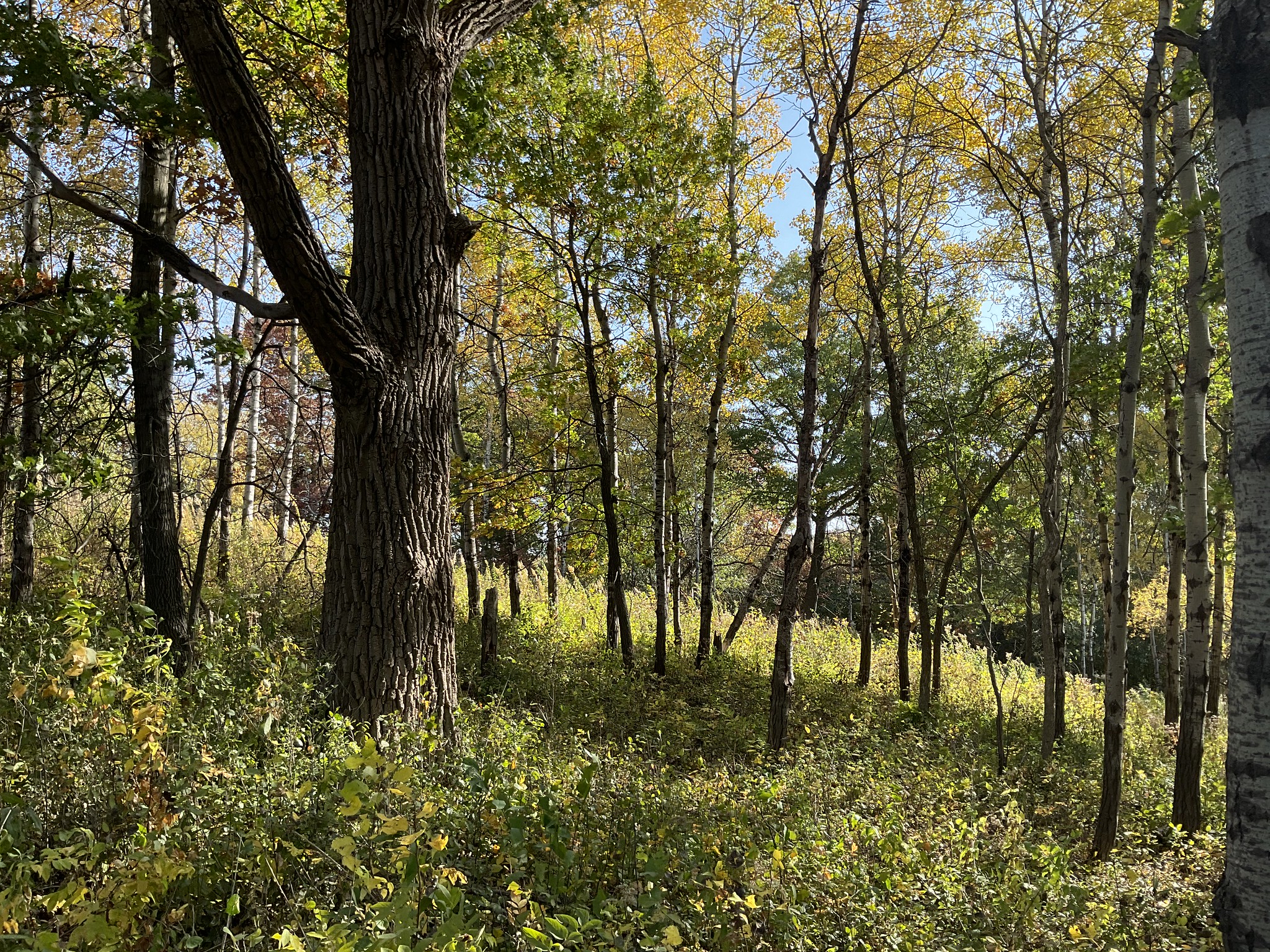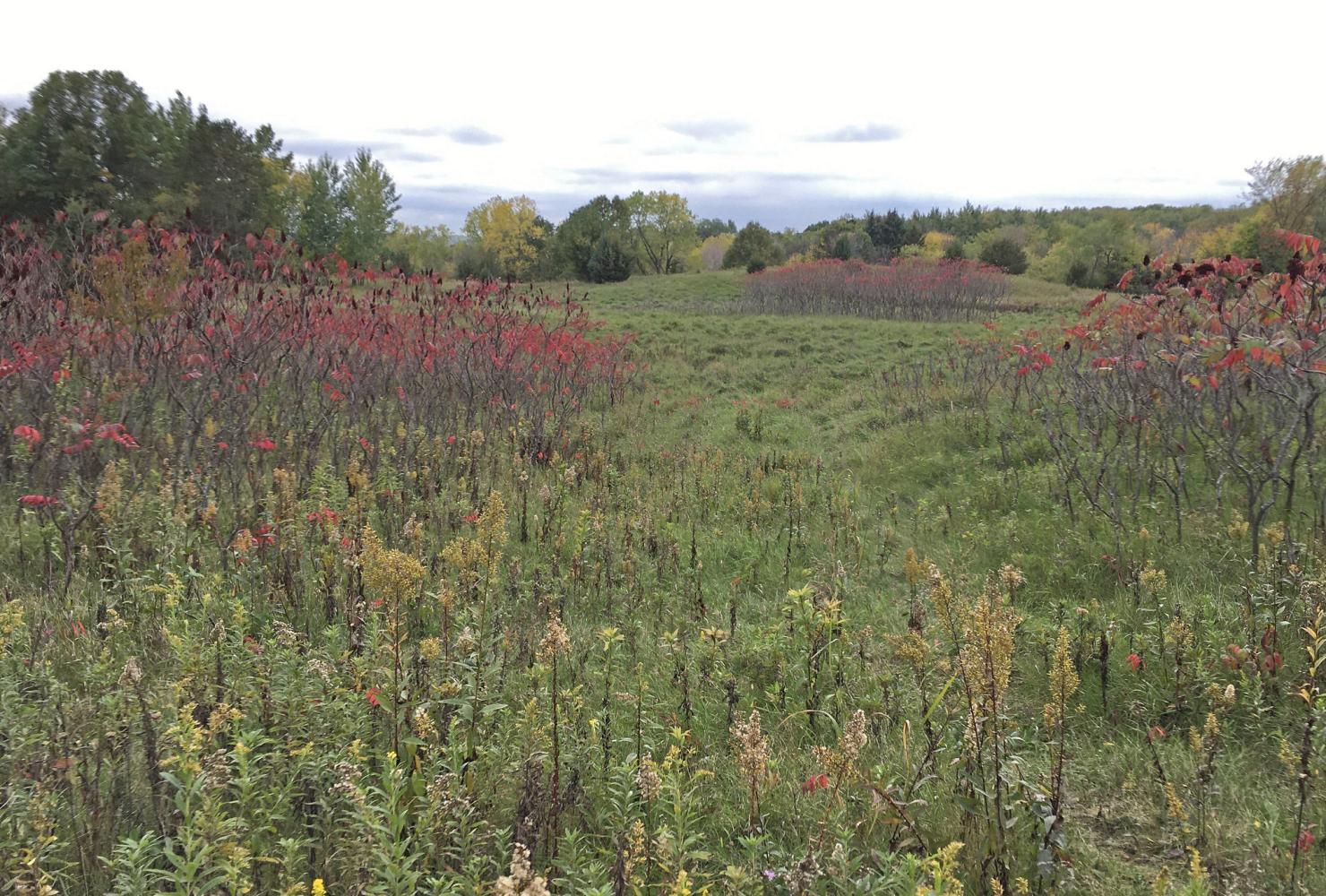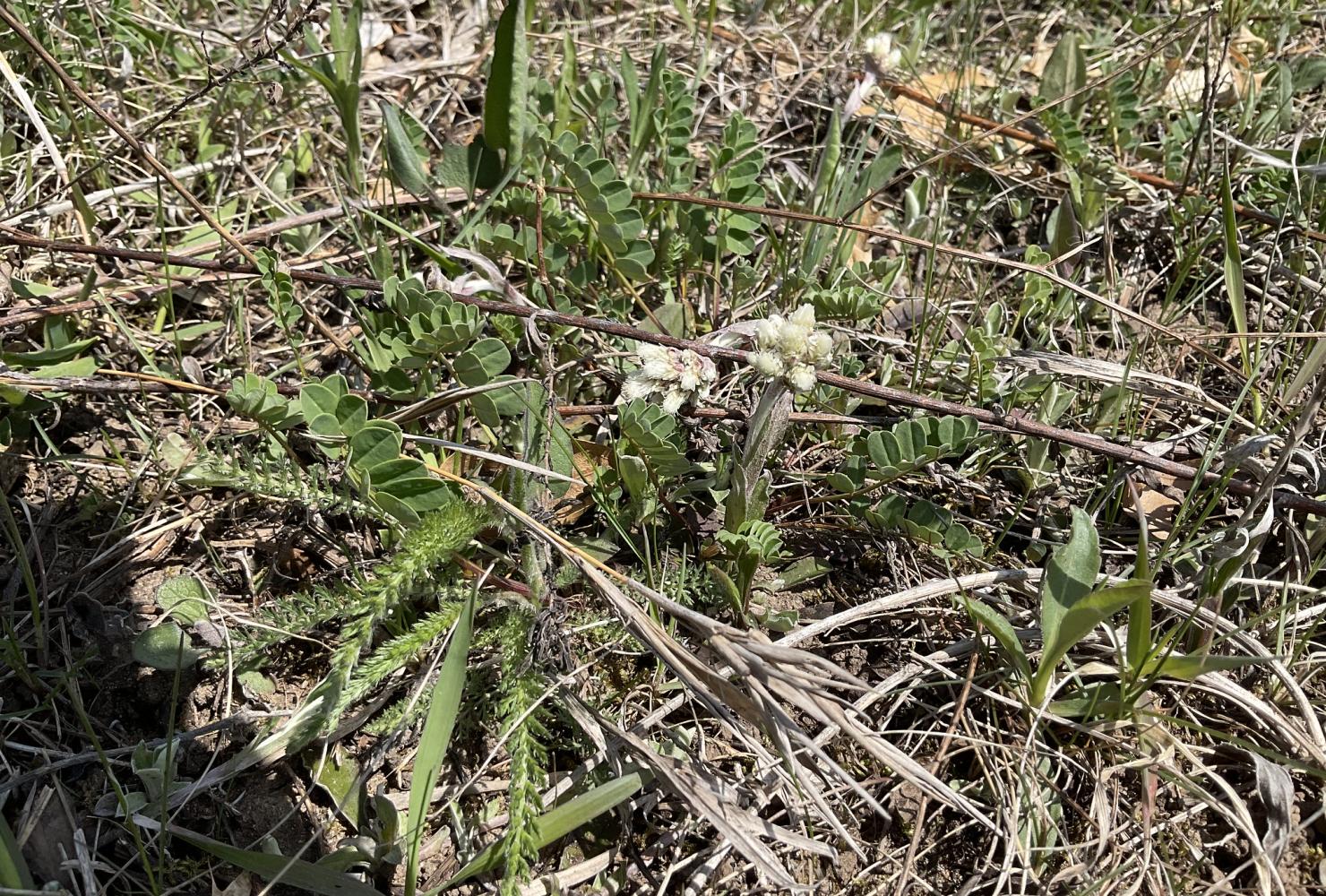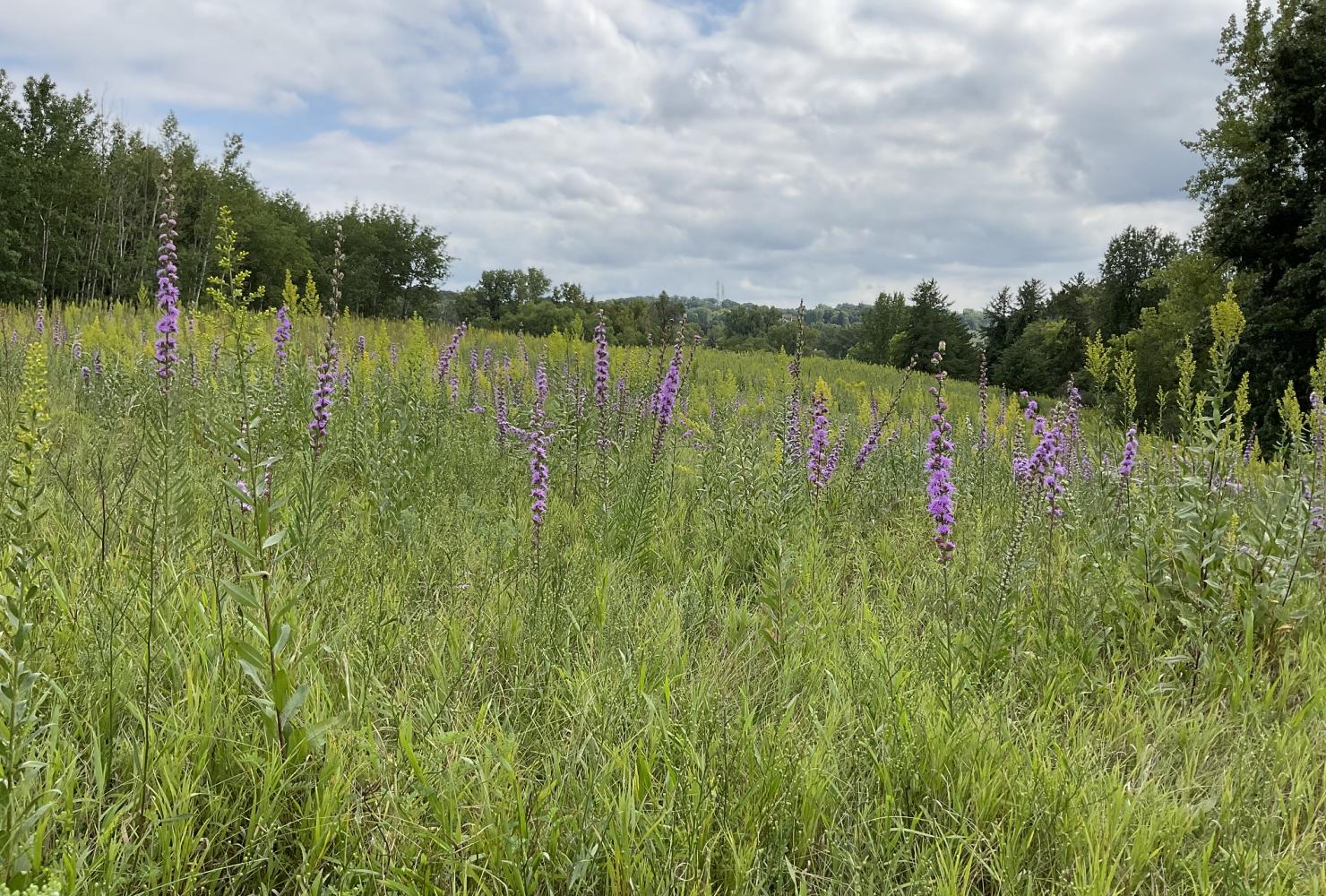Carver Preserve

At a protected Maplewood neighborhood preserve on the east side of the river, we're bringing woodland and prairie habitats back to life with the help of a robust remnant seed bank.
Where is Carver Preserve?
Carver Preserve is a 27-acre habitat preserve located in Maplewood. It's directly north of Fish Creek Natural Area, tucked right inside the I-494 loop.
Our restoration work at Carver Preserve builds critical habitat on the east side of the Mississippi River. Friends of the Mississippi River is also restoring nearby Applewood Preserve.
The public is welcome to visit Carver Preserve. (See City of Maplewood's website for more info.)
Our work here takes place on Dakota homelands.
What's special about Carver Preserve?
Carver Preserve is one of 15 neighborhood preserves located in the City of Maplewood. These protected lands are open to the public and allow people a glimpse of the pre-European colonization landscape that was present in Maplewood prior to development. Surrounded by residential housing and the interstate highway system, Carver Preserve is permanently protected land poised to become quality habitat.
There are currently no developed trails or amenities, although the public is welcome to visit from dawn to dusk.
When Friends of the Mississippi River first set out to develop a natural resource management plan for Carver Preserve, the plant communities in the park didn't look particularly special. Non-native cool season grasses and invasive plants dominated 10 acres of old field, surrounded by another 15 acres of degraded oak woodland and 2 acres of wetlands.
But we could see hints of habitat quality. We found a small population of rough blazing star in a particularly sandy section of the old field and beautiful, old cottonwoods along ravine edges.
Our work at Carver Preserve
Our work at Carver started in 2022 with the creation of a natural resources management plan. This is almost always the first step we take before embarking on land restoration. Creating a management plan allows us to understand what makes the site special and what needs to be done to restore and enhance those special features. Through this process at Carver, we identified the need to restore prairie in the old field and manage invasive species, particularly buckthorn, in the woodlands.
Restoration implementation work started in 2023, first through funding from the Environment and Natural Resources Trust Fund as recommended by the Legislative-Citizen Commission on Minnesota Resources, and then with follow-up funding from Minnesota's Outdoor Heritage Fund.
We're removing buckthorn and reestablishing native grasses in the woodlands. Our goal is to establish enough native ground cover so that one day, we can manage these acres using prescribed fire.
Restoring the old field has brought surprises and rewards. What started as a brome-dominated field, full of crown vetch and leafy spurge, is slowly transforming before our eyes. The first restoration step we took was to conduct a prescribed burn in early 2024 to remove thatch and allow for more effective site preparation steps.
After all the thatch was removed, the native seed bank sprang to life! Prior to the burn, we thought maybe a half-acre had remnant native prairie plants. After the burn, we realized it was much closer to 3 acres. This kind of discovery doesn't happen very often at highly degraded sites, and it is a land manager's dream. As a result, we'll give this area special protection and attention. And in the more degraded areas, we'll continue to seed and establish prairie, aiming for more flower diversity to support pollinators.
Find out more and get involved
- Volunteer with us to restore places like this.
- Learn about other FMR-restored prairie wonderlands.
- Contact project lead Restoration Project Manager Logan Olson.
Partners and funders for our work at Carver Preserve
This work is done in partnership with the City of Maplewood, with funding from the Environment and Natural Resources Trust Fund as recommended by the Legislative-Citizen Commission on Minnesota Resources, the Outdoor Heritage Fund as part of the Clean Water, Land and Legacy Amendment, and by our generous volunteers and donors like you!

One growing season prior, the buckthorn in this woodland was so thick, it was difficult to walk through.
Where we work
FMR maintains over three dozen habitat restoration and land protection sites in the metro area.




